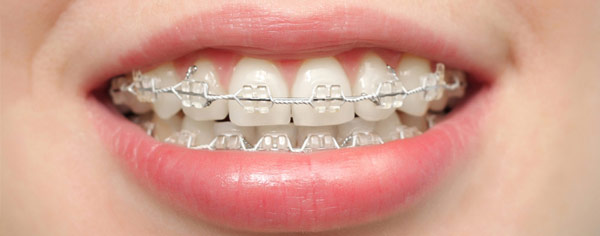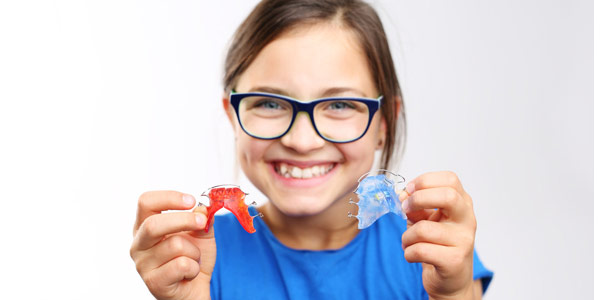Request an appointment!
Adult’s Orthodontics
Contrary to myths, teeth can be regulated for adults, too. Since the jaw is fully developed at this age, usually only moving the teeth is possible, and it takes longer to achieve the expected result than in childhood. Other orthodontic devices are used for adults than for children.
In the case of minor abnormalities (e.g. minor endognathion, aesthetic problems), sometimes the use of a removable apparatus is sufficient. This has several types. The traditional is very similar to the one used in paedodontics (children’s dentistry), it is a metal-plastic combination. Another type of it is the alinger, which is called invisible braces by many. It’s got this name because the plastic splint placed on the denture is completely transparent and therefore it has an aesthetic effect. These splints usually have to be replaced every few weeks until the desired result is achieved.
Many of the adults are hesitant to wear fixed apparatuses because they are not really aesthetic. To overcome this problem, we have many possibilities available to our patients.
In addition to the traditional metal braces, ceramic apparatuses adjusted to the color of teeth are also available, which are much more aesthetic and less noticeable. These are fixed to the outer surface of the dental arch. There are also so-called lingual orthodontic braces that are fixed to the inside of the dental arch. This design is also aesthetic, as it cannot be seen from outside.
After taking off the fixed bracers, the retaining device (retainer) is prepared. This is necessary to keep the achieved results, as the teeth may begin to move away from their position. The retainer can be removable or fixed. The fixed retainer is usually fixed to 6 upper and lower teeth at the front region inside the dental arch, so it isn’t visible from outside. The removable device should be worn at night mostly, 10 to 12 hours a day altogether.

Children’s Orthodontics
In the mouth of a child there are 20 baby (primary) teeth altogether, 5 in each region. After tooth eruption begins, 32 permanent teeth grows instead of the 20 temporary, which can lead to many problems. With the early detection and proper treatment of existing or evolving disorders (for example: narrow dental arch, open bite, endognathion), the emergence of major problems can be avoided.
It is worth taking the child to the first orthodontic examination at the age of five or six. Our clinic in Nyíregyháza offers free consultation, where the orthodontic specialist performs a full examination and inform the parents.
The first braces can be made when the child is 8-9 years old, which is specially constructed for temporary teeth, as there is no need to wait until all primary teeth are replaced by permanent teeth. Wearing these devices is recommended at night, but it is good if the patient wears it for a few hours during the day, too. The effectiveness of this design is largely the parents’ responsibility, since if the device is not in the child’s mouth, effective result cannot be achieved. Wearing it for 10-12 hours a day is recommended.
How long should these devices be worn depends on the situation. It cannot be generalized because every person and every situation is different. It may be necessary to wear the removable apparatus for up to 1-4 years.
The course of tooth eruption: the first permanent molars (that is, the 6s in FDI numbering), usually appear at the age of six. At the age of 7-8, loss of the primary teeth begins and the permanent teeth arrive at their place. This transition process ends at 13-14 years of age. The third molars (wisdom teeth) comes later in adulthood, but in recent years it is becoming increasingly common that they do not come forward at all, because they have no germ.

